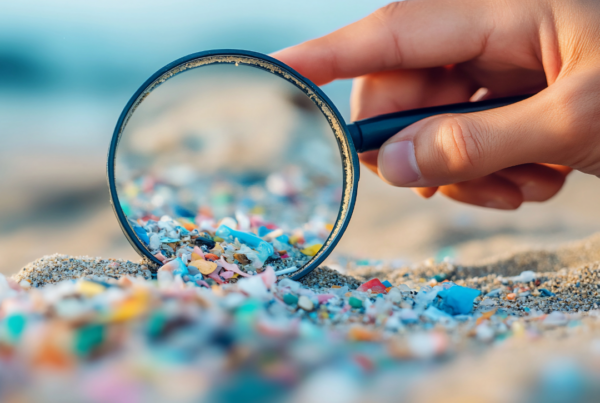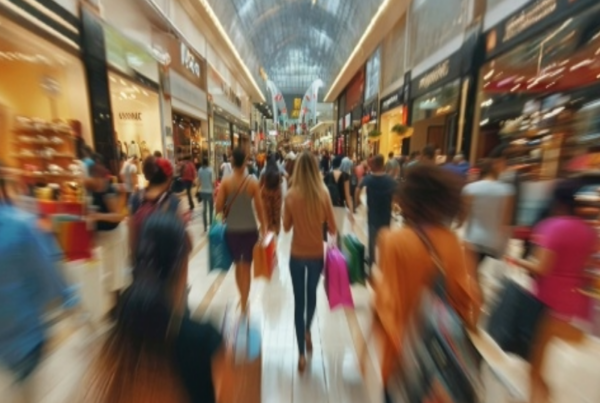The world’s first fully kerbside recyclable paper crisp packet was launched earlier this year by The British Crisp Co. This award-winning packaging was the result of a collaboration between EvoPak, a manufacturer of sustainable paper based flexible packaging, Aquapak, developers of HydropolTM, paper supplier Nissha, and Mica, the primers and coatings experts. The new pack was developed and trialled over a period of four years, although the R&D process to create HydropolTM has taken over ten years.
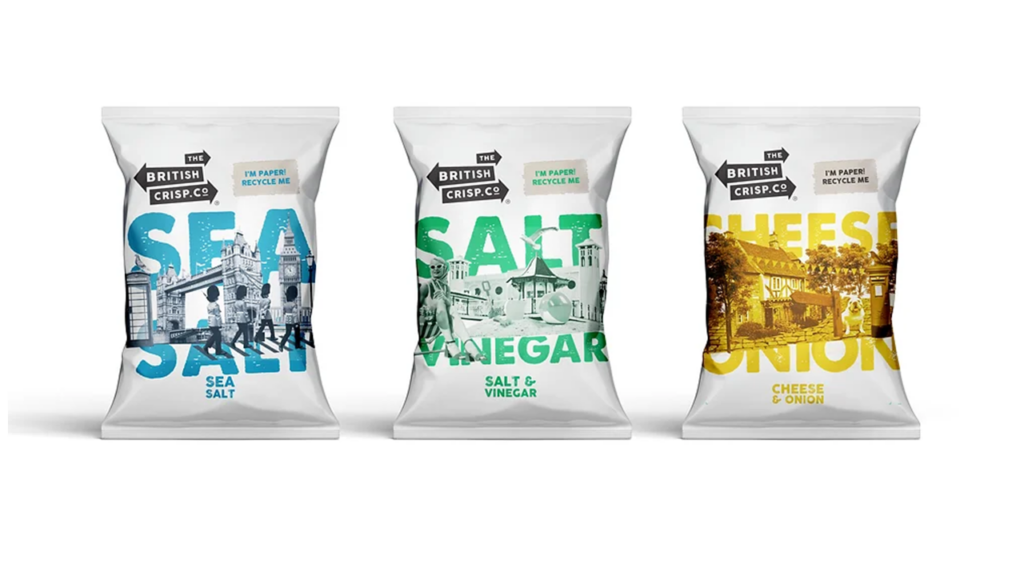
Recycle with paper at home, rather than return to store.
HydropolTM can be used instead of conventional plastic and enables product and packaging design to meet all necessary functional and performance requirements, whilst increasing recyclablity, reducing harmful plastic pollution and supporting the circular economy. It enables functional paper packaging to be produced for a range of applications providing a convenient and easy solution for consumers to recycle, ending confusion about which bin to place their used packaging into.
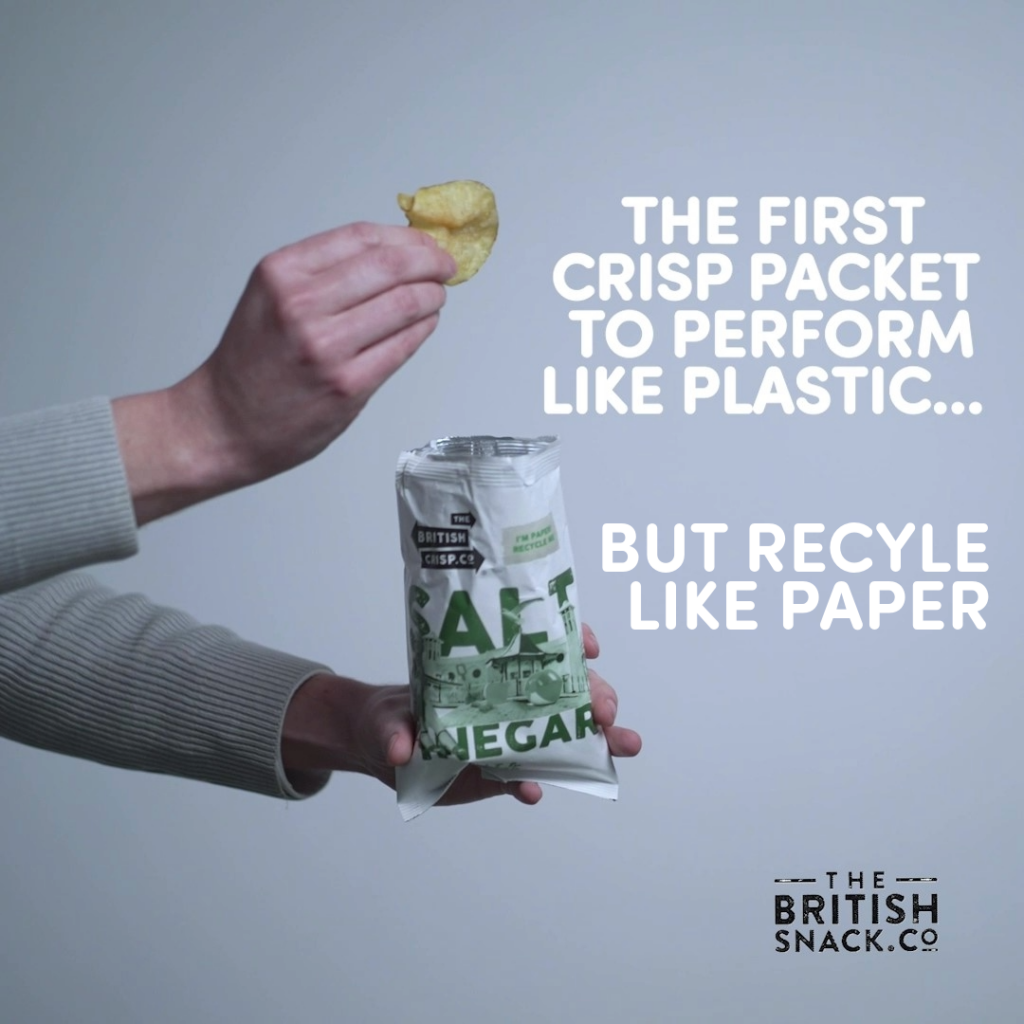
For example, with the new crisp packet, consumers simply can drop it into their normal kerbside recycling collection along with their other paper recyclable items, rather than taking them back to supermarkets for disposal where, unfortunately in many cases they are still likely to end up in landfill or incinerated, rather than recycled.
The Challenge : Developing recyclable paper packaging that keeps crisps 100% fresh
The challenge was to move savoury snacks such as crisps from non-recyclable to fully recyclable packaging, providing an alternative to the eight billion crisp packets which are thrown away each year in the UK. However, snacks such as crisps are notoriously difficult to keep in prime condition because they are particularly susceptible to moisture and oxygen which means they spoil easily if the packaging material doesn’t provide suitable barrier protection.
The Solution
HydropolTM gives the paper a functional performance, significantly improving run-ability and also bringing a high oxygen (OTR) barrier, enabling brands to switch to paper packaging. To meet high moisture barriers needed to keep the crisps fresh, HydropolTM was used in combination with Nissha metallised paper in order to give the moisture barrier required for this application. To ensure packaging integrity with perfect adhesion between the layers, primer technology from MICA Corporation is used between the HydropolTM and paper.
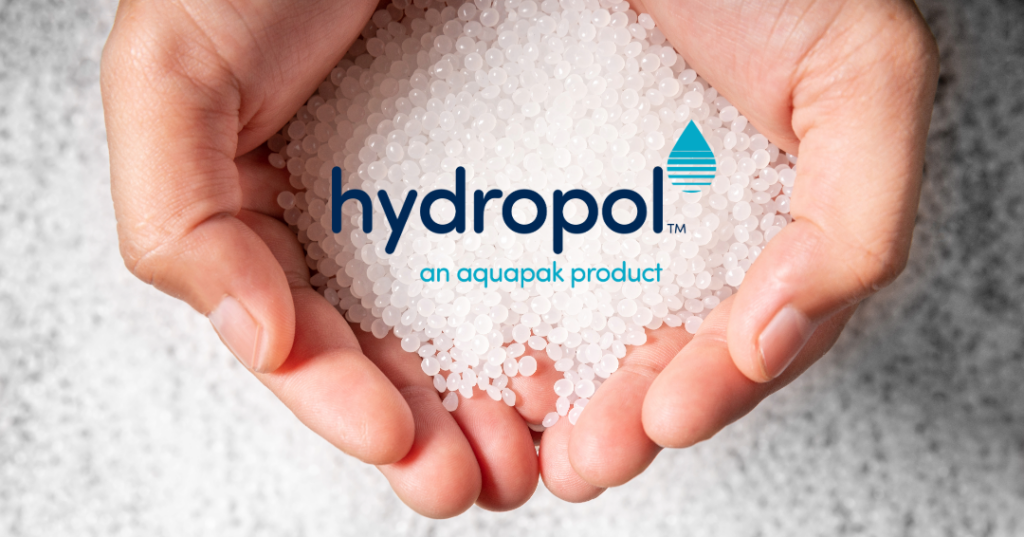
The new paper structure uses virgin paper coated with vapour deposited aluminium which is only 30 nanometres thick (less than a human hair), coated with HydropolTM , enabling full compliance with recyclability standards. This structure provides a water vapor transmission rate (WVTR) suitable for keeping the crisps fresh and in top condition for consumption with a shelf life of up to six months. A non-metallised version of the paper has also been developed which is suitable for products such as chocolate and confectionary.
Premium Quality
The new crisp packet has a total grammage of 1g of HydropolTM per packet. This paper/ HydropolTM combination has the added benefit of a high-quality look and feel, enables sharp print quality, and offers brands the opportunity for premiumisation when they move away from existing packaging.
Machinability
The advantage of using HydropolTM is that it performs like plastic but behaves like paper. This means that HydropolTM primed paper performs exceptionally well on existing packaging lines because it gives the paper extra strength, which is on a par with, or exceeds, conventional plastic.
HydropolTM coated paper is compatible with horizontal form, fill and seal machinery which usually forms a fin seal closure. However, most vertical machines use a lap seal, so a different forming shoulder may need be installed to allow a fin seal as the formed bag comes down the machine. This requires a relatively small CapEx investment.
Best in class fibre recovery
HydropolTM solubility can enable high fibre recovery rates with yield scores often in excess of 95%. Independent tests have shown that HydropolTM provides exceptional fibre recovery when repulped in the recycling process, whereas traditional solutions such as LDPE coatings and foil lamination not only generate a problematic plastic waste fraction. They also trap and remove valuable paper fibre from the recycling process.
As tested to the CEPI and 4EverGreen protocol, an example of Hydropol’s recyclability performance can be seen below.
| 100gsm DS Smith Test Liner Coated 25gsm Hydropol™ | |
| Coarse Rejects | 0% |
| Fine Rejects | 0.12% |
| Yield | 99.9% |
| Visual | 1 (Scored 1-4) |
| Adhesiveness | 1 (Scored 1-4) |
| 4EG Total Score | 100 out of 100 |
Mitigating Plastic Tax
The plastic packaging tax does not apply to packaging components that are not predominately plastic by weight. When Hydropol™ is coated or laminated onto paper such as the crisp packet, it also falls out of scope of the Plastic Packaging Tax.
Tests – OPRL Approved
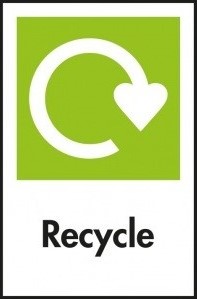
Both the metallised and non-metallised materials have been certified as recyclable in standard paper recycling mills by OPRL, the only evidence-based on pack recycling labelling scheme. This means they feature the green recycle logo and can be disposed of in consumer kerbside collections along with other paper material, unlike other crisp packets. Both comply with European standards such as 4Evergreen and all other widely accepted paper testing regimes and standards, which are coming to dominate the recyclable paper standards across Europe.
Reasons to switch to new recyclable paper material
This next generation packaging material, powered by Hydropol™ innovation helps brands meet sustainability pledges to customers, shareholders and other stakeholders and helps fast-track a move away from conventional plastics that linger on as harmful microplastics polluting our environment for decades.
- Customers like and understand paper as a sustainable and recyclable solution
- The new material mitigates the Plastic Packaging Tax
- Manufacturers and brands currently must pay for the removal of waste plastic, whereas recyclers will pay to take used paper material away, thanks to its secondary value
- By moving from plastic to paper, brands have an opportunity for premiumisation
- There are positive headwinds: our research with FMCG packaging experts shows that over half (56%) said their business would be willing to pay 4% – 5% more for proven, environmentally friendly packaging materials, compared to existing plastics. One third said their business would pay between 6% and 9% more, and 8% said between 10% – 20% more.
- Current margins can support a cost increase in the short to medium term
- Costs of the new paper material are currently more than that of existing non-recyclable material. However, as use of the former increases, economies of scale mean that the costs will come down too.
To discover more about science of Hydropol™ watch our video here.
